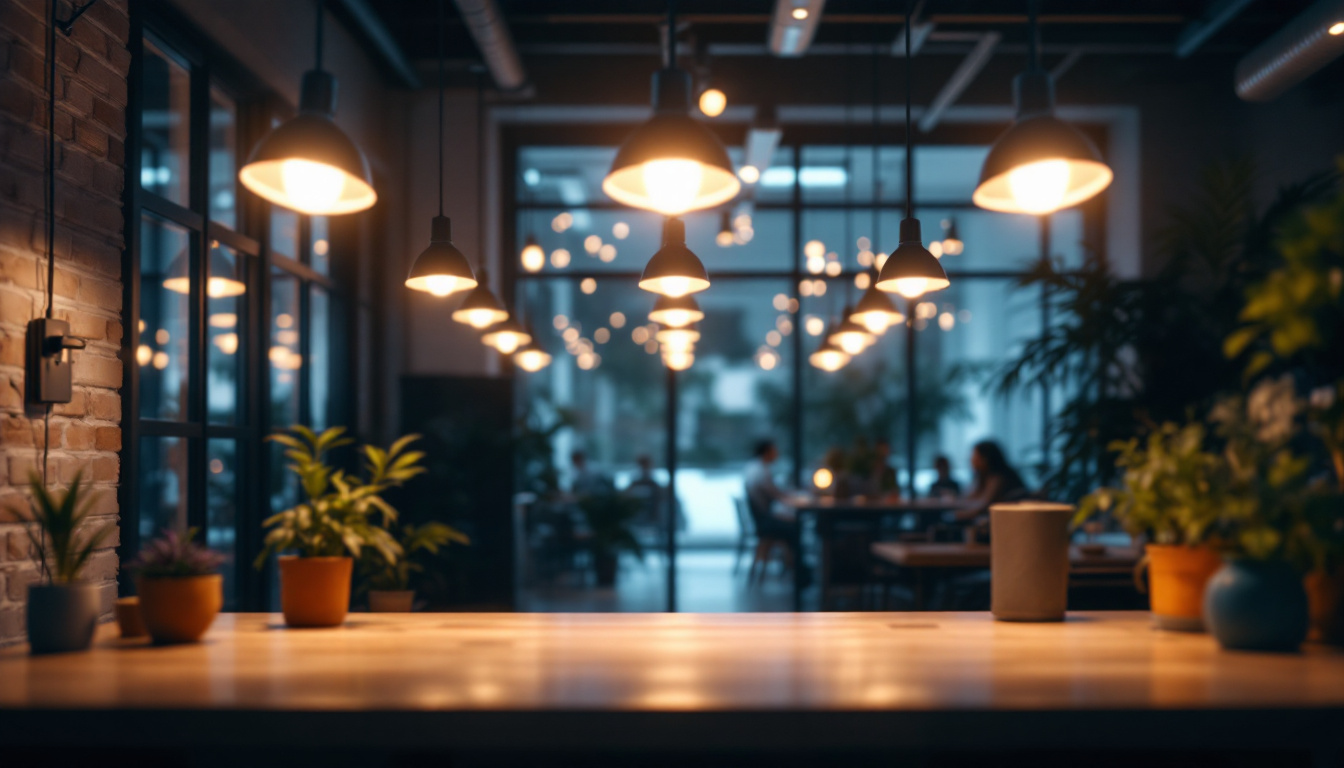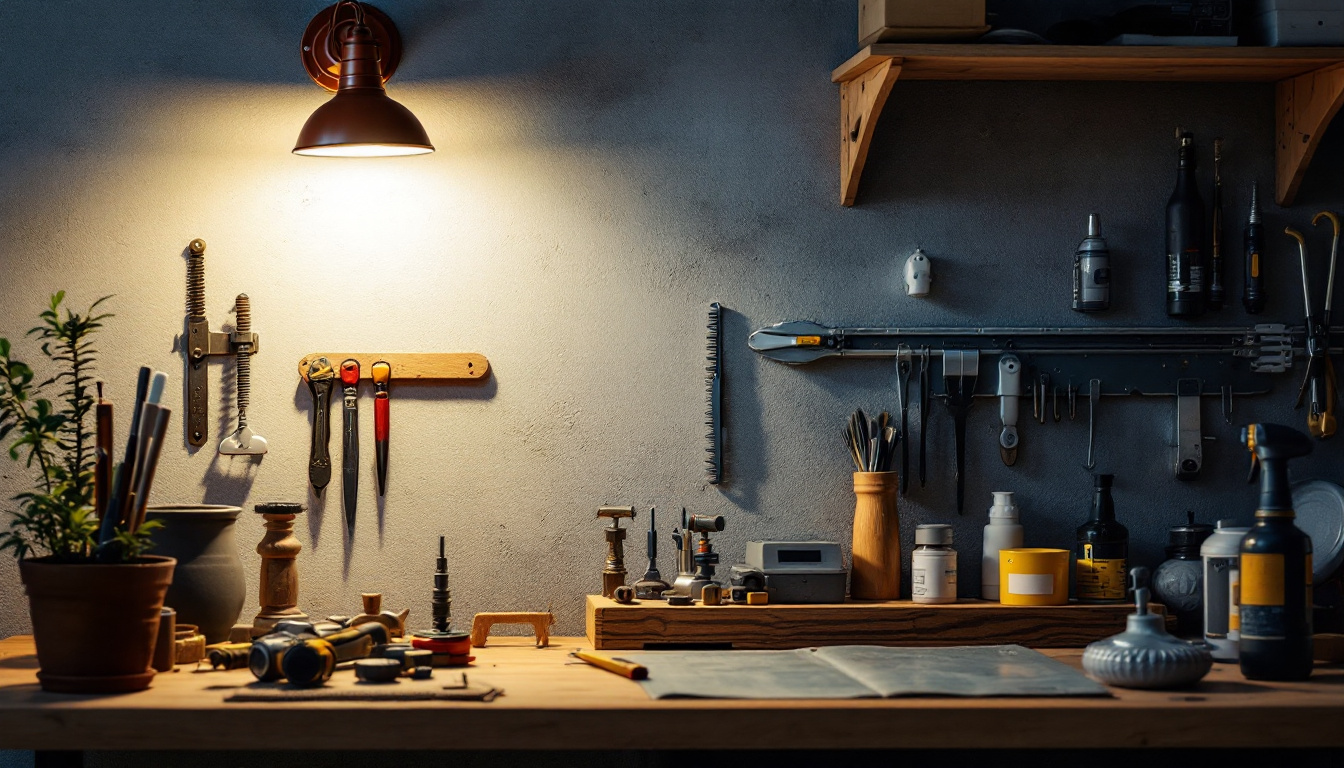
In the world of studio lighting, the choice of lamps plays a crucial role in determining the quality and effectiveness of the lighting setup. For lighting contractors, understanding the science behind studio lamps is essential not only for ensuring optimal lighting conditions but also for meeting the specific needs of clients. This article delves into the different types of lamps available, their characteristics, and how they can be effectively utilized in a studio environment.
Lighting is one of the most critical elements in any studio, whether it be for photography, videography, or live performances. The right lighting can enhance the visual quality of a project, create mood, and influence the overall aesthetic. For lighting contractors, understanding the nuances of studio lighting can significantly impact the success of their projects.
Different projects require different atmospheres, and lighting is a key factor in achieving this. For instance, a warm, soft light may be ideal for a cozy portrait session, while a harsh, bright light could be necessary for a high-energy music video. By selecting the appropriate lamp type and color temperature, lighting contractors can tailor the studio environment to meet the specific demands of each project. Additionally, the use of gels and filters can further modify the light, allowing for creative effects that can transform a standard setup into something truly unique. For example, using a blue gel can evoke a sense of calm and tranquility, perfect for a serene scene, while a red gel can inject energy and passion into the frame, making it ideal for dramatic performances.
The quality of light affects how subjects are perceived on camera. Factors such as color rendering index (CRI) and light diffusion play significant roles in achieving the desired visual quality. A lamp with a high CRI will render colors more accurately, making it essential for projects where color fidelity is crucial. Lighting contractors must be aware of these characteristics to ensure that their lighting setups meet the expectations of clients. Moreover, the placement of lights can dramatically alter the perception of depth and texture in a scene. For instance, backlighting can create a halo effect around subjects, adding a layer of dimension, while side lighting can enhance shadows and contours, bringing out the details that might otherwise go unnoticed. Understanding how to manipulate these elements allows lighting professionals to craft images that are not only visually stunning but also convey the intended narrative effectively.
There are several types of lamps commonly used in studio settings, each with its unique characteristics and applications. Understanding these types can help lighting contractors make informed decisions when designing lighting setups.
Incandescent lamps have been a staple in studio lighting for many years. They produce a warm light that is often favored for its natural appearance. However, they are not the most energy-efficient option and have a shorter lifespan compared to other types of lamps. Their ability to dim easily makes them a popular choice for creating varied lighting effects. Additionally, incandescent lamps provide a continuous spectrum of light, which is beneficial for color rendering, making them a preferred choice for photographers and videographers who prioritize accurate color reproduction in their work.
Despite their advantages, the heat generated by incandescent lamps can be a drawback in smaller studio spaces, as it may require additional cooling measures. This heat can also impact the performance of other equipment in the studio. As a result, many lighting designers opt for a combination of incandescent and other lighting types to balance warmth and efficiency while managing heat output effectively.
Fluorescent lamps are known for their energy efficiency and longer lifespan. They are available in various color temperatures, making them versatile for different studio applications. However, the quality of light produced by fluorescent lamps can sometimes be less desirable, as they may not render colors as accurately as incandescent bulbs. Lighting contractors should consider the specific needs of a project when choosing fluorescent lamps. The flickering that can occur with some fluorescent lights may also be a concern, particularly in video production, where consistent lighting is crucial.
On the positive side, fluorescent lamps are often used in large studio settings due to their ability to illuminate expansive areas with minimal energy consumption. They can be found in various forms, including compact fluorescent lamps (CFLs) and linear tubes, allowing for flexibility in installation. Additionally, advancements in technology have led to improved color rendering index (CRI) ratings for fluorescent lamps, making them a more viable option for professional lighting setups.
LED lamps have gained immense popularity in recent years due to their energy efficiency, long lifespan, and versatility. They are available in a wide range of color temperatures and can be easily adjusted to create different lighting effects. Additionally, many LED lamps offer features such as dimming and color-changing capabilities, making them ideal for dynamic studio environments. For lighting contractors, investing in high-quality LED lamps can significantly enhance the overall lighting design. The compact size of LED fixtures also allows for innovative lighting solutions, such as mounting in tight spaces or creating intricate lighting arrangements.
Moreover, LED technology continues to evolve, with new products entering the market that offer even greater control over lighting conditions. Some LED lamps now come equipped with smart technology, enabling remote control and programmable settings that can adapt to various production needs. This level of adaptability is particularly beneficial in studios where lighting requirements may change frequently, allowing for quick adjustments without the need for extensive equipment changes. As a result, LED lamps are not just a trend but are becoming a cornerstone of modern studio lighting design.
Color temperature is a crucial aspect of studio lighting that affects the mood and appearance of a scene. Measured in Kelvin (K), color temperature indicates whether a light source appears warm (yellowish) or cool (bluish). Understanding this concept is vital for lighting contractors when selecting lamps for specific projects.
Warm lighting, typically ranging from 2700K to 3000K, creates a cozy and inviting atmosphere. This type of lighting is often used in portrait photography and intimate settings. On the other hand, cool lighting, which ranges from 5000K to 6500K, provides a more clinical and bright appearance, making it suitable for commercial photography and video production. Lighting contractors must assess the project requirements to determine the appropriate color temperature.
The Color Rendering Index (CRI) measures a light source’s ability to accurately render colors. A higher CRI indicates better color accuracy, which is crucial for projects where color fidelity is paramount. Lighting contractors should aim for lamps with a CRI of 90 or above for studio applications to ensure that colors appear true to life on camera.
Once the appropriate lamps have been selected, lighting contractors can employ various techniques to achieve the desired effects in a studio setting. Understanding these techniques can elevate the quality of the final output.
Three-point lighting is a foundational technique used in studio lighting that involves the use of three light sources: key light, fill light, and backlight. The key light is the primary source that illuminates the subject, while the fill light softens shadows created by the key light. The backlight adds depth by separating the subject from the background. This technique creates a balanced and visually appealing lighting setup that enhances the overall quality of the scene.
High-key lighting is characterized by bright, even illumination with minimal shadows, often used in fashion and commercial photography. In contrast, low-key lighting involves stronger contrasts and deeper shadows, creating a more dramatic effect suitable for film noir or moody portraits. Lighting contractors should choose the appropriate technique based on the project’s artistic direction and client preferences.
When designing a lighting setup for a studio, several factors must be considered to ensure optimal performance and results. These considerations can significantly impact the effectiveness of the lighting design.
The physical space of the studio plays a significant role in determining the lighting setup. Factors such as ceiling height, wall color, and available space for equipment must be taken into account. Lighting contractors should assess the studio layout to determine the best placement for lamps and other lighting equipment, ensuring that the light reaches the intended areas without creating unwanted shadows or hotspots.
Light modifiers, such as softboxes, umbrellas, and reflectors, can significantly alter the quality of light produced by lamps. These tools help diffuse harsh light, soften shadows, and create a more controlled lighting environment. Lighting contractors should consider incorporating various modifiers into their setups to achieve the desired effects and enhance the overall quality of the lighting.
Proper maintenance of studio lamps is essential for ensuring their longevity and performance. Lighting contractors should implement regular maintenance routines to keep lamps in optimal condition, minimizing downtime and maximizing efficiency.
Dust and debris can accumulate on lamps, affecting their output and color quality. Regular cleaning of lamps and fixtures is necessary to maintain optimal performance. Lighting contractors should use appropriate cleaning methods and materials to avoid damaging the lamps while ensuring they remain free from obstructions.
Even the best-quality lamps have a limited lifespan. Lighting contractors should keep track of lamp usage and replace them as needed to avoid unexpected failures during critical projects. Having a stock of replacement lamps on hand can help minimize disruptions and ensure that projects stay on schedule.
Understanding the science behind studio lamps is essential for lighting contractors aiming to create effective and visually appealing lighting setups. By exploring the different types of lamps, color temperature considerations, and lighting techniques, contractors can enhance their skills and deliver high-quality results to their clients. With careful planning, attention to detail, and ongoing maintenance, lighting contractors can ensure that their studio lighting remains at the forefront of creativity and innovation.
Ready to elevate your studio lighting with the best in the business? At LumenWholesale, we provide lighting contractors with exceptional, spec-grade lighting products at prices that can’t be beaten. Say goodbye to local distributor markups and hello to a vast selection of high-quality lighting that meets the most rigorous industry standards. With our commitment to reliability and performance, your lighting projects will shine like never before. Plus, with free shipping on bulk orders, you can stock up on premium lighting solutions without worrying about hidden fees. Don’t compromise on quality or value—choose LumenWholesale for a seamless blend of affordability and convenience. Discover our unbeatable wholesale lighting deals at the best value by visiting LumenWholesale today.

Discover the top strategies lighting contractors use to optimize commercial can lights for efficiency and aesthetics.

Discover the frequent pitfalls lighting contractors face with standard bulbs and learn how to avoid them.

Discover the transformative benefits of wall mount shop lights for your lighting installation projects.

Discover the essential guide for lighting contractors with “Illuminating Light Switch: The Ultimate Lighting Contractor Checklist.” This comprehensive article provides expert insights, practical tips, and a step-by-step checklist to ensure flawless lighting installations and client satisfaction.